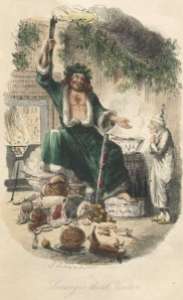Why am I here?: the importance of character purpose
Why am I here and what am I trying to do? Two of the most important questions every actor has to ask themselves about the character they are playing, regardless of whether their character’s raison d’etre is as mundane as delivering a tea tray to the posh folks in the drawing room or as sublime as soliloquising on the meaning of life, the universe and why their mother married their uncle.
Let’s be honest, a lack of purpose is distracting for an audience: they should be concentrating on the play itself, not wondering why a particular character appears to be meandering aimlessly about the stage with all the air of an indecisive rabbit caught in headlights or stuck in the middle of a scene as though surplus to requirements. So answering those two questions is an important part of an actor’s job and actor training (via Stanislavsky) has come up with various methods to help them do so.
So what has all this got to do with emotional arcs? Apart, of course, from the fact that the same rules apply to characters in a novel or short story as to those in a play or film. Well, let’s look at the whole concept of emotional arcs to start with.
Emotional arcs
First up, what is an emotional arc? Essentially it can be defined as the emotional journey a character goes on throughout the course of a story: the growth, changes, denials and acceptances of the events and incidents they experience along the way and the emotional choices they make. Of course, this doesn’t mean that a character absolutely has to change by the end of a book—their tragedy might well be that for whatever reason(s) they choose not to grasp the opportunities for change offered to them, but from a reader’s perspective, watching them make those choices is where the emotional heart of a story lies. And to truly engage a reader, a story needs an emotional heart.
Here’s the traditional way of illustrating an emotional arc—a sort of character rainbow graph:
However, I like to think of it as more an emotional barometer than a graph. Don’t think of it in terms of the character feeling happy, sad, pleased or vexed—think instead of the emotional pressure being applied to a character at any given time in the story. At the height of the story, the emotional pressure should be at its most intense. And what gives us this increase in intensity as the plot develops is dealing with a character’s wants and yearnings—what Robert Olen Butler in his wonderful book about writing fiction, From Where You Dream (with Janet Burroway), calls ‘the dynamics of desire’. Because the character’s yearnings, wants and desires are the driving force behind the events in the book, the momentum that will push the story forwards to its conclusion.
Objectives: wants, goals and aims
Which is where we return to acting. One of the ways in which an actor approaches a script for rehearsals is to break it down into ‘objectives’: ‘super-objectives’ for larger sections of the play such as acts, or indeed the whole play itself, and ‘units’ for smaller scenes or moments of action.
By giving a character a want, goal or aim for every single moment and playing the sense of purpose generated by each objective, an actor can bring an energy and dynamism to performance which hooks an audience from the start and keeps them engaged throughout the play.
And what author wouldn’t want the same for his or her readers? So next time, I’ll look at how using objectives can help writers develop their characters and the useful knock-on effect on plot and structure.






